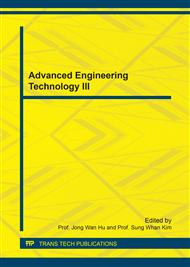p.492
p.496
p.502
p.508
p.518
p.525
p.532
p.539
p.547
Conceptual Design of an Auxiliary Autonomous Vehicle for Disabilities People
Abstract:
This paper deals with the detailed conceptual design development of an autonomous vehicle, with the primary goal of transporting people with mobility problems or visual weakness, and thus avoid the risk of falls, tiredness, and fatigue; this aims to satisfy the needs of an increasing population with disabilities. An alternative solution is set for transfer based design methodology, which addresses each of the established requirements. The design stages established by Pahl & Beitz are described in detail, from the design proposal to functional prototype. The result of this work after evaluating the technical and financial analysis is a proposal of the functional design of the autonomous vehicle, which will be used in the main entrances of the Polytechnic University of Guanajuato (UPGTO). Regarding the autonomy of the vehicle, a vision system can be integrated if necessary as futre work, which will ensure its functionality and safety throughout its way; and thus be able to move through the main entrance towards the desired site.
Info:
Periodical:
Pages:
518-524
Citation:
Online since:
June 2017
Keywords:
Price:
Сopyright:
© 2017 Trans Tech Publications Ltd. All Rights Reserved
Share:
Citation:


